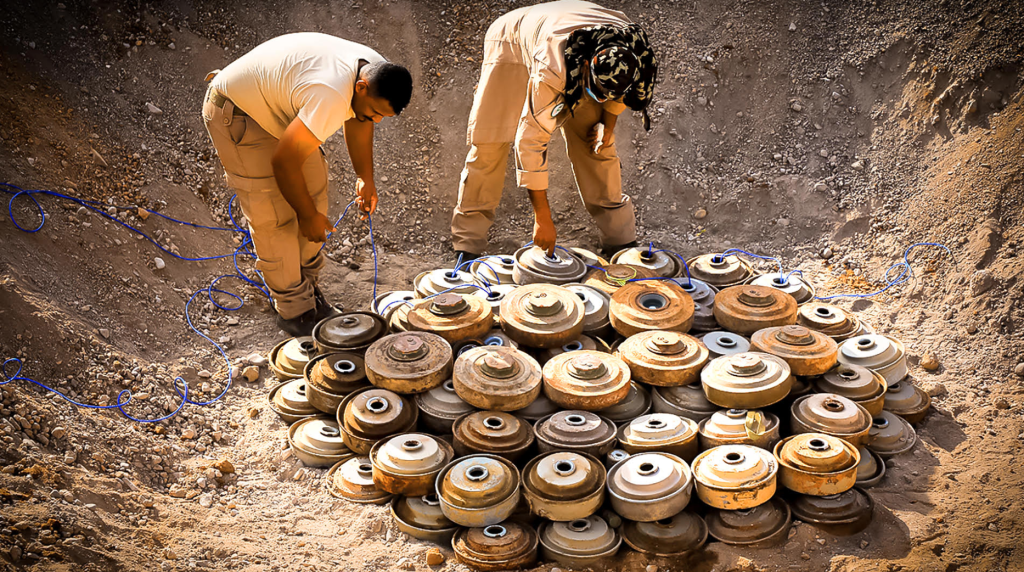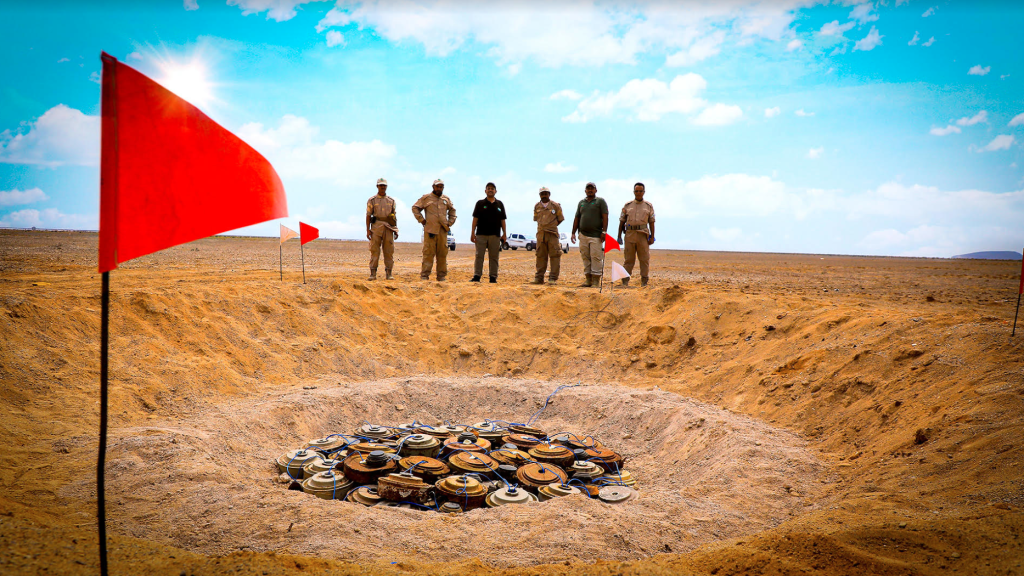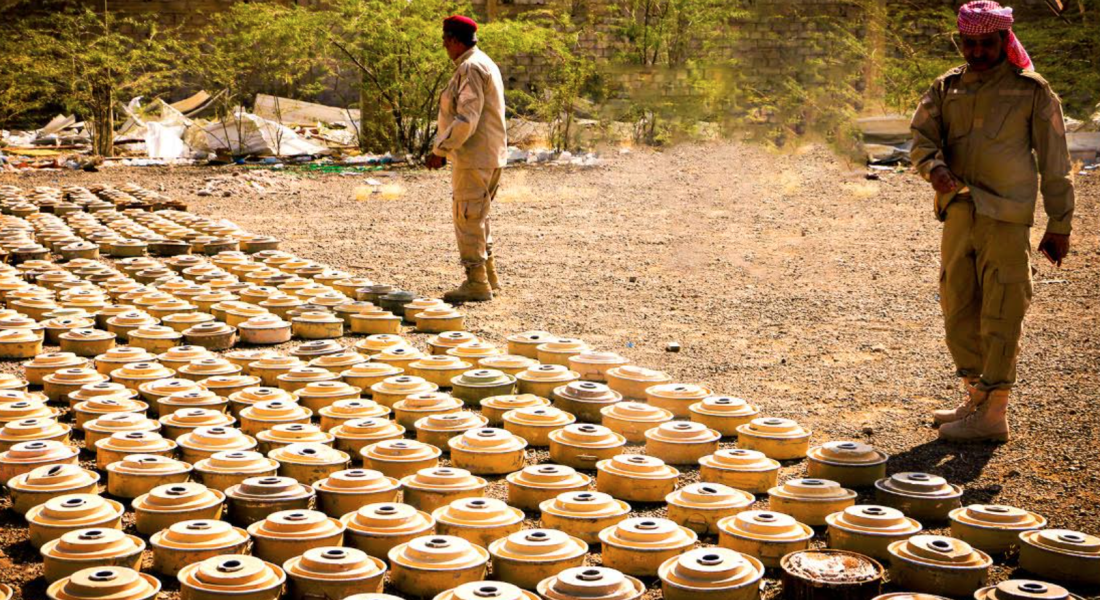Project Masam announced that it successfully removed 360,573 landmines, improvised explosive devices and various unexploded ordnance in Yemeni liberated areas, in accordance with the latest statistics published early this month.
The project aims to clear the Yemeni territory of landmines, by addressing the direct threats to the civilians due to exposure to the dangers caused by landmines, in addition to reinforcing the Yemeni capacities in the sphere of demining.
Landmines have claimed the lives of thousands of Yemenis, and injured tens of thousands of people – often with disabling injuries and amputations.
In April 4, the United Nations Development Program office in Yemen revealed that landmines and unexploded ordnance had killed or injured 1,800 civilians including 689 women and children, in a number of Yemeni governorates over the last four years.
Reports from international and local organisations confirm that Yemen has witnessed one of the largest mine-laying operations on its territory since the end of World War II.
Project Masam continues to carry out its mission to rid Yemen of landmines and all other explosive items threatening civilians of all genders and ages, along with threatening the country’s present and future at all levels.
Four years since the launch of Project Masam in July 2018, the project has contributed to saving hundreds of thousands of Yemenis by removing more than 360,000 landmines, improvised explosive devices and unexploded ordnance – a result that reveals the extent of the contamination caused by the Houthi militias against innocents.
Masam began its humanitarian work in Yemen by training and rehabilitating 32 engineering teams in the hands of international and Saudi experts. In addition, the engineering teams were also provided with state-of-the-art technologies in the field of mine detection together with providing them with training, equipment, financial and logistical support through a joint operations room.
Despite the absence of landmines maps – a tremendous challenge – Masam teams continue to successfully retrieve, detonate and destroy these explosive items.
More than 550 deminers, who make up the field teams, continue their daily work, proudly remembering their 33 colleagues – including five foreign experts- who lost their lives performing their life-saving duties.
Last May, the Kingdom of Saudi Arabia extended Masam’s operations for a fifth year at an estimated cost of $33.3 million to carry out its role in Yemen – clearing residential areas (homes, water sources and places of worship), schools, and roads of Houthi landmines.

Masam’s scope of operations
Masam is not limited to removing these explosive items, but it also works to destroy them to ensure they cannot be re-used.
Osama Al-Gosaibi, Project Masam’s Managing Director, said that the Iranian-backed Houthi militias are on a daily basis planting and re-planting mines, with little consideration for the lives of civilians, including children, women and the elderly who make up the majority of landmine victims in Yemen.
On the other hand, Masam continuously adapts to the advances in Houthis’ manufacturing, technical and technological aspects of new locally-build landmines and explosive devices.
Since 2018, the Yemeni deminers have witnessed new developments in the field, including emerging trends, new threats, and new variants of explosive devices, effectively driving Masam to provide specialised training to Yemeni demining teams.
Across various Yemeni provinces, deminers have witnessed new types of locally-developed booby-trapped mines, new technologies, as well as a huge uptake in the number of landmines planted by the armed group across swathes of land.

Al-Gosaibi stressed that the Houthi militias have introduced new technology into the manufacture of these explosives and mines including new methods and mechanisms to remotely detonate these booby-traps.
Highlighting long technical assessment of the makeup of these new types of landmines, Al-Gosaibi pointed out that this evidence amounts to war crimes committed indiscriminately against civilians. These allegations are widely shared by human rights organisations and governments and the international community.
The technical evaluations show that the explosives and booby-traps are manufactured and installed inside Yemen, but the materials used in their manufacture are imported from outside Yemen, and cannot be from a local origin.
Al-Gosaibi also revealed that Houthis have adopted a brutal approach by professionally planting explosives and booby-traps in schools, health centers and water tanks, in large quantities. He also added that clearing Yemen of mines will take years, due to the density of landmines and the lack of minefield maps, pointing out that “the Houthis are still planting thousands of mines in Yemen”.
Al-Gosaibi confirmed that Masam estimates reveal that the Houthi militias planted more than one million landmines and explosive devices in the areas they occupied that have now been liberated.

